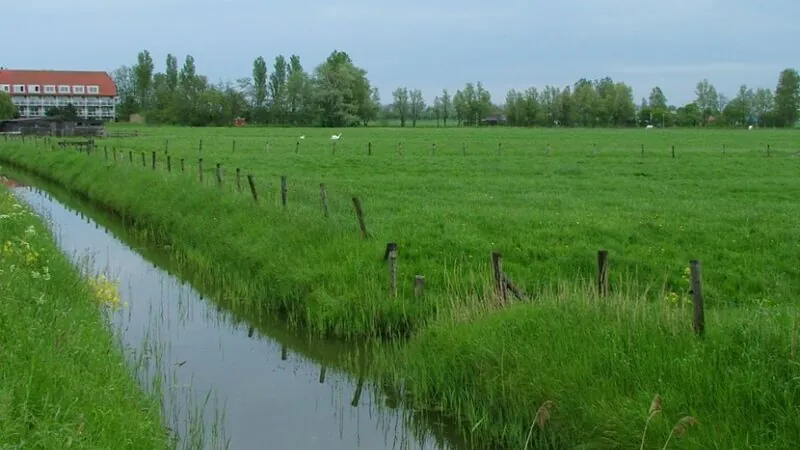
Groundbreaking Study Reveals Direct Measurements Pave the Way for Reliable Soil Carbon Credits!
2025-01-18
Author: John Tan
Groundbreaking Study Reveals Direct Measurements Pave the Way for Reliable Soil Carbon Credits!
In an age where climate change remains a critical concern, a recent study co-authored by experts from Yale School of the Environment has spotlighted a revolutionary method to measure soil carbon. Published in Environmental Research Letters, the findings indicate that directly measuring carbon stored in soil—not just relying on predictive models—could drastically improve our understanding and confidence in carbon credit markets for agricultural lands.
This innovative approach highlights the importance of implementing real-world strategies that allow for effective verification of carbon storage due to climate-smart practices, such as crop cover and minimal tillage. By adopting study designs typically used in fields like epidemiology, researchers demonstrated a feasible method for quantifying the impacts of these agricultural practices not just on carbon levels but also on soil health overall.
Mark Bradford, a co-author and esteemed professor in Soil and Ecosystem Ecology, emphasized the broader implications of this study. "Direct measurements conducted on a larger scale make it possible not only for carbon markets but also for national greenhouse gas reporting efforts," he stated, showcasing the significance of the work beyond local farming practices.
The critical nature of enhancing natural carbon solutions is echoed by the Intergovernmental Panel on Climate Change (IPCC), which asserts such measures are vital in the fight against the climate crisis. While traditional soil organic carbon (SOC) accounting has relied on measure-and-model approaches, thereby depending heavily on small-scale trials, the accuracy in predicting outcomes on expansive commercial farms is often questionable. The new study's methodology, known as "measure and remeasure," advocates for collecting data across hundreds of fields, yielding a comprehensive understanding of carbon storage.
Accurately gauging changes in soil carbon remains a complex challenge due to the slow nature of carbon accumulation amidst large existing stocks. The researchers recommend sampling approximately 10% of fields across numerous farms—potentially spanning tens of thousands of acres—over extended periods to garner reliable data. This direct assessment method leads to heightened assurance for buyers regarding the authenticity of carbon credits, while simultaneously driving down monitoring costs as these projects expand.
Notably, this approach offers a unique opportunity to enhance the predictive capabilities of existing models used for greenhouse gas accounting in crop settings. It aligns perfectly with the internal standards that businesses are adopting to meet net-zero goals, thus advancing corporate sustainability initiatives.
For farmers eager to navigate the economics of soil management projects, Eric Potash from the University of Illinois has developed an open-source web app that streamlines the cost-benefit analysis of soil carbon initiatives. Users can input various parameters like project size, duration, analysis costs, and sampling strategies to assess profitability effectively.
Bradford concluded with a powerful vision: "Quantifying soil carbon changes through the adoption of climate-smart agricultural practices could reshape policies and investments aimed at soil restoration. This would not only boost water retention, nutrient availability, and soil biodiversity but also cultivate resilient agricultural practices capable of withstanding extreme weather—a key pillar for ensuring food security in the long run."
This study could be a game-changer in the world of carbon credits! Are you ready to change the way we think about soil and carbon storage?



 Brasil (PT)
Brasil (PT)
 Canada (EN)
Canada (EN)
 Chile (ES)
Chile (ES)
 Česko (CS)
Česko (CS)
 대한민국 (KO)
대한민국 (KO)
 España (ES)
España (ES)
 France (FR)
France (FR)
 Hong Kong (EN)
Hong Kong (EN)
 Italia (IT)
Italia (IT)
 日本 (JA)
日本 (JA)
 Magyarország (HU)
Magyarország (HU)
 Norge (NO)
Norge (NO)
 Polska (PL)
Polska (PL)
 Schweiz (DE)
Schweiz (DE)
 Singapore (EN)
Singapore (EN)
 Sverige (SV)
Sverige (SV)
 Suomi (FI)
Suomi (FI)
 Türkiye (TR)
Türkiye (TR)
 الإمارات العربية المتحدة (AR)
الإمارات العربية المتحدة (AR)